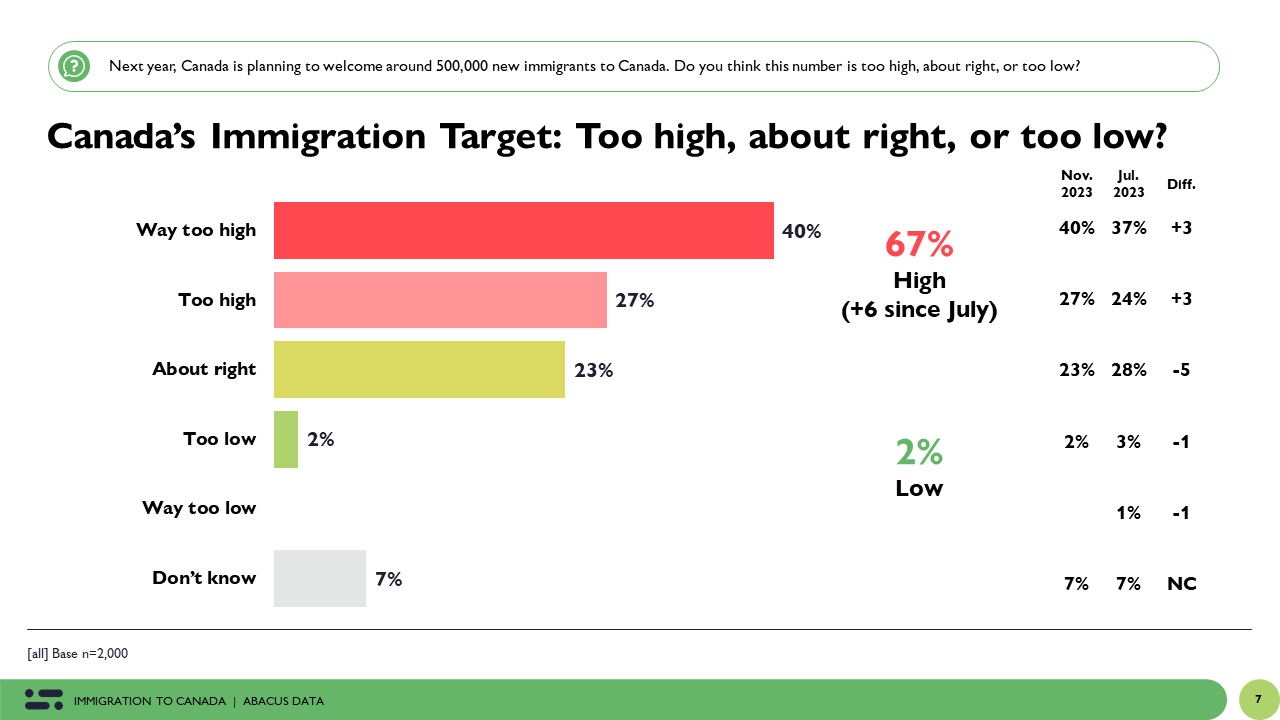Canadian Views on Immigration: What the Polls Say

Recent polling data is shedding light on evolving public sentiment regarding immigration in Canada. This information is especially important for immigrants, as these shifts can directly impact government policies concerning immigration intake, community funding, and support systems for multicultural initiatives essential for newcomers to thrive.
Why Public Sentiment on Immigration Matters
Public perception significantly shapes policy. Understanding how Canadians feel about immigration can help predict potential changes in areas like:
- Immigration Levels: Are Canadians in favor of increasing, decreasing, or maintaining current targets?
- Integration Programs: What support do Canadians believe newcomers need to integrate into Canadian society?
- Community Resources: Is there public support for funding language training, settlement services, and other resources?
For example, if polls indicate growing concerns about housing affordability, it could lead to pressure on the government to adjust its targets. Understanding these trends allows newcomers and prospective immigrants to prepare for potential policy changes. You can check out recent reports on the Statistics Canada website.
Key Findings from Recent Polls
Several recent polls have explored sentiment regarding immigration. While specific results vary depending on the polling organization and questions asked, some common themes emerge:
- A significant portion of Canadians acknowledge the economic benefits, particularly in addressing labor shortages and boosting innovation.
- Concerns exist regarding the strain on infrastructure and social services, such as healthcare and housing, due to population growth.
- Integration challenges remain a topic of discussion, with differing opinions on how best to support newcomers in adapting to Canadian culture and values.
- Regional variations exist in attitudes, reflecting different economic conditions and demographic compositions across the country. For instance, attitudes may differ significantly between major metropolitan areas like Toronto or Vancouver and smaller, more rural communities.
Local Perspectives in [Your City/Region]
Understanding national trends is important, but it’s also crucial to consider local perspectives. In [Your City/Region – e.g., Calgary, Alberta], attitudes are often shaped by [mention specific local factors like the local economy, recent immigration patterns, or relevant local issues]. For example:
- [Example: Calgary’s energy sector plays a significant role in attracting skilled immigrants, leading to generally positive views on immigration’s economic benefits.]
- [Example: Recent debates about affordable housing in Vancouver have influenced discussions about immigration levels and their impact on the housing market.]
Resources for Newcomers
Regardless of public opinion trends, numerous resources are available to support newcomers. These include:
- Settlement Agencies: Organizations like the [Name of local settlement agency in Your City/Region] offer services such as language training, job search assistance, and cultural orientation programs.
- Government Programs: Immigration, Refugees and Citizenship Canada (IRCC) provides information and resources on various immigration pathways and settlement support programs.
- Community Organizations: Many community groups and ethnic associations offer social and cultural support to newcomers.
Staying Informed About Immigration
Staying informed about immigration and related policy changes is essential for newcomers. Follow reputable news sources, engage with community organizations, and participate in public discussions to understand the evolving landscape.

